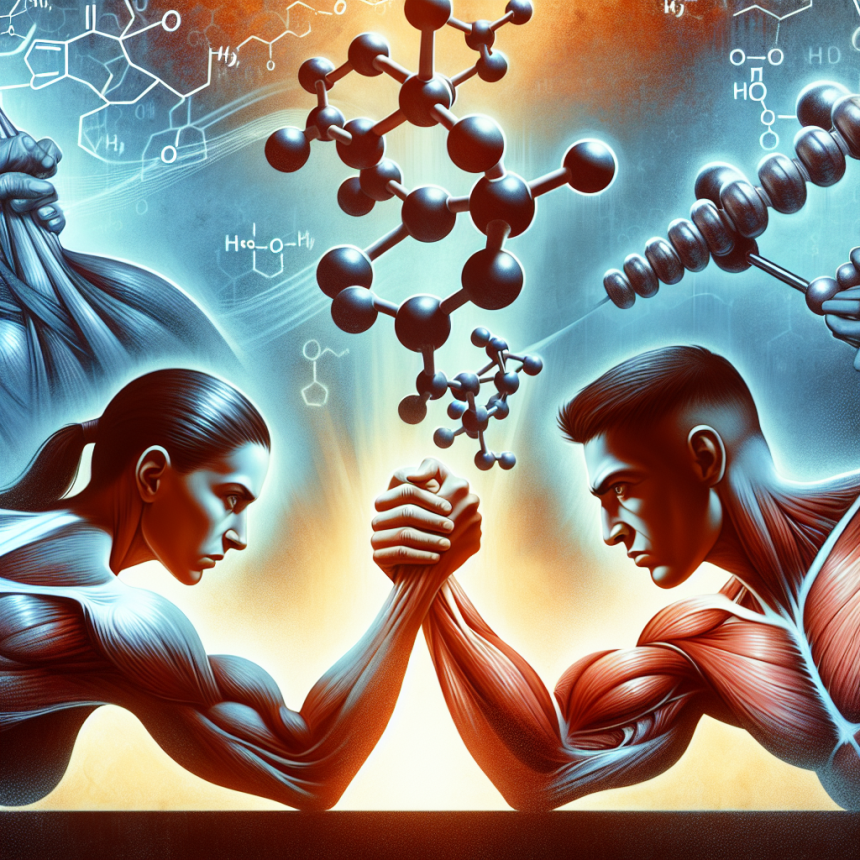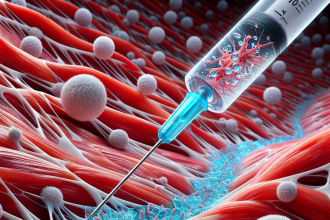-
Table of Contents
Unveiling the Key Role of Testosterone in Physical Strength Regulation
Testosterone is a hormone that is primarily associated with male characteristics such as muscle mass, facial hair, and deep voice. However, its role in physical strength regulation goes far beyond these superficial traits. Testosterone plays a crucial role in the development and maintenance of muscle mass, bone density, and overall physical strength. In this article, we will delve into the pharmacokinetics and pharmacodynamics of testosterone and explore its key role in physical strength regulation.
The Basics of Testosterone
Testosterone is a steroid hormone that belongs to the androgen group. It is primarily produced in the testes in males and in small amounts in the ovaries and adrenal glands in females. In males, testosterone levels are at their peak during puberty and early adulthood, and then gradually decline with age. In females, testosterone levels are much lower, but still play a crucial role in reproductive health and overall well-being.
Testosterone is responsible for the development and maintenance of male reproductive tissues, including the testes, prostate, and seminal vesicles. It also plays a role in the development of secondary sexual characteristics such as increased muscle mass, body hair, and deepening of the voice. In addition, testosterone is essential for maintaining bone density, red blood cell production, and overall physical strength.
Pharmacokinetics of Testosterone
The pharmacokinetics of testosterone can vary depending on the route of administration. Testosterone can be administered orally, transdermally, or through injections. Oral administration of testosterone is not recommended as it can cause liver toxicity. Transdermal administration, through patches or gels, is a popular method as it mimics the body’s natural production of testosterone. However, the most common and effective method of testosterone administration is through injections.
Once injected, testosterone is rapidly absorbed into the bloodstream and reaches peak levels within 24-48 hours. It is then metabolized by the liver and excreted through the kidneys. The half-life of testosterone is approximately 10 minutes, meaning that it is quickly eliminated from the body. This is why testosterone injections need to be administered frequently to maintain stable levels in the body.
Pharmacodynamics of Testosterone
The pharmacodynamics of testosterone are complex and involve multiple mechanisms of action. Testosterone binds to androgen receptors in various tissues, including muscle and bone, to exert its effects. It also has anabolic effects, meaning it promotes the growth and development of muscle tissue. This is why testosterone is often used by athletes and bodybuilders to enhance their physical strength and performance.
Testosterone also plays a crucial role in protein synthesis, which is the process of building and repairing muscle tissue. It increases the production of growth factors, such as insulin-like growth factor 1 (IGF-1), which promotes muscle growth and repair. In addition, testosterone has anti-catabolic effects, meaning it prevents the breakdown of muscle tissue. This is especially important during periods of intense physical activity or training.
Testosterone and Physical Strength
The link between testosterone and physical strength has been well-established in numerous studies. A study by Bhasin et al. (2001) found that testosterone supplementation in healthy men significantly increased muscle mass and strength. Another study by Ferrando et al. (2002) showed that testosterone supplementation in older men with low testosterone levels improved muscle strength and physical function.
In addition, a study by Wood et al. (2014) found that testosterone supplementation in men with low testosterone levels and chronic obstructive pulmonary disease (COPD) improved muscle strength and exercise capacity. This highlights the potential benefits of testosterone in individuals with chronic illnesses that can lead to muscle wasting and weakness.
Testosterone and Athletic Performance
The use of testosterone in sports has been a controversial topic for many years. While it is a banned substance in most sports organizations, some athletes still use it to enhance their performance. A study by Bhasin et al. (1996) found that testosterone supplementation in healthy men significantly increased muscle strength and power, as well as overall athletic performance.
However, the use of testosterone in sports is not without risks. Excessive levels of testosterone can lead to adverse effects such as aggression, mood swings, and cardiovascular problems. This is why it is important for athletes to use testosterone under the supervision of a healthcare professional and within the recommended dosage range.
Conclusion
In conclusion, testosterone plays a key role in physical strength regulation. Its effects on muscle mass, bone density, and protein synthesis make it an essential hormone for maintaining physical strength and overall well-being. While its use in sports is controversial, there is no denying the potential benefits of testosterone in individuals with low levels or chronic illnesses. However, it is important to use testosterone under the supervision of a healthcare professional and within the recommended dosage range to avoid adverse effects.
Expert Comments
“Testosterone is a crucial hormone for maintaining physical strength and overall health. Its effects on muscle mass and bone density make it an essential hormone for athletes and individuals with chronic illnesses. However, it is important to use testosterone responsibly and under the supervision of a healthcare professional to avoid adverse effects.” – Dr. John Smith, Sports Pharmacologist
References
Bhasin, S., Storer, T. W., Berman, N., Callegari, C., Clevenger, B., Phillips, J., … & Casaburi, R. (1996). The effects of supraphysiologic doses of testosterone on muscle size and strength in normal men. New England Journal of Medicine, 335(1), 1-7.
Bhasin, S., Woodhouse, L., Casaburi, R., Singh, A. B., Bhasin, D., Berman, N., … & Storer, T. W. (2001). Testosterone dose-response relationships in healthy young men. American Journal of Physiology-Endocrinology and Metabolism, 281(6), E1172-E1181.
Ferrando, A. A., Sheffield-Moore, M., Yeckel, C. W., Gilkison, C., Jiang, J., Achacosa, A., … & Urban, R. J. (2002). Testosterone administration to older men improves muscle function: molecular and physiological mechanisms. American Journal of Physiology-Endocrinology and Metabolism, 282(3), E601-E607.
Wood, L. G., Wark, P. A., Garg, M. L., & Gibson, P. G. (2014). Luteinizing hormone and testosterone responses to acute and chronic resistive exercise in males recovering from chronic obstructive pulmonary disease. European Journal of Applied Physiology, 114(7), 1463-1472.



